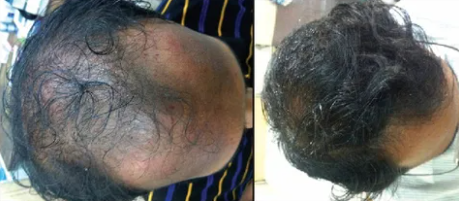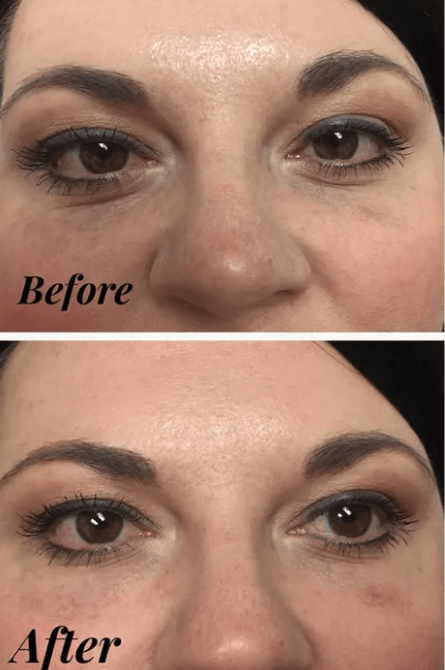PRP and PRF
Therapy and Facials
Schedule Your Virtual Consult Today!
Hours:
PRP and PRF Hair Treatment
Hair loss affects both men and women and is completely normal and part of the aging process. Some other factors can influence the rate that hair loss occurs, such as genetic predispositions of the person, alopecia areata, and even severe stress. Hair restoration with platelet-rich fibrin PRF and the addition of cellular matrix or acell is a virtually painless, cutting-edge procedure that is used for patients who do not want surgery. The results are amazing.
Platelet-Rich-Fibrin (PRF) hair restoration is a new, non-surgical treatment that uses cell growth factors to regenerate and restore the inactive hair follicle through wound-healing technology. These specific growth factors are essential in tissue regeneration and healing.
PRF is obtained by drawing the patient’s own blood, just like it is done during a routine blood test. It is then separated using a centrifuge. While the blood is being prepared, the patient’s scalp will be numbed with a topical anesthetic cream to make the treatment virtually painless. Once the serum is isolated, it will be strategically injected into the scalp where hair loss or hair thinning has occurred. It may also be combined with Micro-Needling therapy. When the procedure is over, the patient can leave and immediately go back to their normal daily activities.
The hair follicles treated with PRF along with EZ Gel will immediately be reinvigorated and begin to grow new hair. The hair will strengthen and become thicker. Hair growth is a slower process, and results can be seen within 3-6 months.
Platelet-rich plasma, often termed PRP, is concentrated blood plasma (composition of blood) that contains approximately five times the number of platelets found in normal circulating blood. Apart from red blood cells and white blood cells, our blood also contains cells known as platelets. The function of platelets is to promote healing and aid in the clotting of blood at the site of a wound. Platelets contain growth factors that promote the regeneration of the cells in the body. PRP has been used in medicine for the last two decades.


How Does PRP and PRF Help in Hair Loss?
If the hair follicles or hair roots are healthy, the growth of the hair is healthy. Hair follicles survive on the nutrition they get from the blood supply. If we introduce fiber with the EZ Gel in the area of damaged hair follicles, it amplifies the body’s naturally occurring wound healing mechanism.
Many doctors around the world believe PRP and PRF can be used to stimulate the growth of hair follicles preventing hair loss.
PRP and PRF Therapy Is Performed in Three Stages
First, approximately 60-100ml of blood is collected from your vein. It’s very similar to having a routine blood test performed at your doctor’s clinic. The blood is collected by a nurse or perfusionist and placed in a special container. The container is then placed in a machine called a centrifuge where your blood is spun for approximately 15 minutes.
When the centrifuge has stopped spinning, your blood components have now been separated. The concentrated platelets have been separated from your normal whole blood. The PRP that contains abundant growth factors and stem cells is now ready to be applied to the scalp. The goal of this process is to increase the effects of PRP therapy on hair loss.
The rich concentration of platelets now has to be applied to the scalp where hair loss has begun. Therefore, preparing the scalp to receive the PRF is necessary. For this, the scalp is stimulated to activate the wound healing process. Topical anesthesia and a cellular matrix called EZ Gel is applied on the portion of the scalp where PRF will be injected. To prepare the scalp for PRF application, we expect all patients to have showered the morning of their scheduled treatment. Please avoid using any hair products on the day of your treatment. The PRF is injected very superficially into the scalp—primarily in the areas of concern.
Mild discomfort is expected during the treatment. You can return to your normal activity almost immediately, but your scalp needs protection from the sun and excessive irritation.
There are many benefits of using PRF treatment to promote healing for hair growth. Highly concentrated growth factors in the form of platelets have been shown to generate new hair growth, thicken thinned-out hair, and make hair transplants grow thicker and healthier.
However, not everyone is an ideal candidate to undergo this procedure. Patients who have an active infection in the scalp, a history of a viral infection like shingles, diabetes, or any clotting disorder, or patients who are on blood-thinning medications like aspirin and immunosuppressive drugs like cyclosporine are not candidates for this procedure.
Also, if hair follicles are completely lost, this procedure is less likely to help patients. Patients may need to opt for hair transplant surgery.
Price $1500 series of 3
Post Procedure
The procedure takes around one hour depending on the amount of hair loss. Since an inflammatory process is initiated at the wound site, there may be mild pain or discomfort felt by the patient at the site where PRP/PRF is injected. Patients are not advised not to take any anti-inflammatory medication since it may interfere with the natural healing process of PRP. Patients generally have to receive this treatment multiple times before they can see any results. However, some patients may only have to receive this therapy once a year.
Complications
The injected area may have mild swelling, it may even be tender to touch. Swelling may go away in a few hours after the procedure while tenderness may go away in a couple of days. There is a possibility of the area getting infected, but this is rare.
Safety
PRF and PRP does not pose any danger of allergy, hypersensitivity, or foreign-body reaction and it is a safe choice for many patients. If you have any questions or concerns, talk to the staff at Revive Clinic by phone or in person.

PRP Facials
The tear troughs are located at the inner corners of the eyes, next to the nose. As we age, people will often encounter problems with this particular facial feature in the form of hollowing, often due to the depletion of the fat in the area. This can also occur in much younger patients due to loss of cheek volume after having lost a lot of weight. It can be quite bothersome as the hollowness can give a person a sunken and almost gaunt look, which only adds years to one’s appearance.
Addressing the tear trough areas, however, requires a lot of finesse. Many factors such as skin thickness, skin color, the underlying bone structure, and the existence or lack of fat pockets all play influential roles in determining the proper course of action.
Sometimes, a two-step approach is taken to improve the appearance of this area. First, a hyaluronic acid filler, such as Belotero, is used to restore volume. Next, platelet-rich plasma is injected into the tear troughs to correct for pigmentary issues that present as dark circles under the eyes.
This combination reduces hollowness, removes discoloration, and eliminates dark shadows so that patients look younger and refreshed.
Price $625 each, $1800 series of 3
Call to schedule a consultation today.
Schedule Your Appointment
for PRP therapy
Call today!
(405) 703-8882
"Loved the staff! I had a great experience."
- Spring B.


Share On: